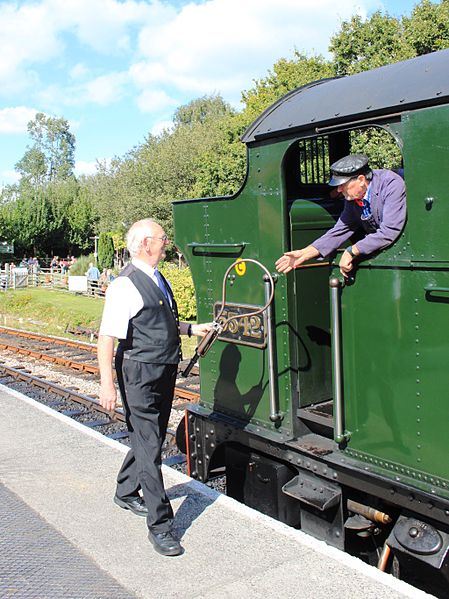Signalling block systems enable the safe and efficient operation of railways by preventing collisions between trains. The basic principle is that a track is broken up into a series of sections or "blocks". Only one train may occupy a block at a time, and the blocks are sized to allow a train to stop within them. That ensures that a train always has time to stop before getting dangerously close to another train on the same line. The block system is referred to in the UK as the method of working, in the US as the method of operation, and in Australia as safeworking.
A block instrument on the Midland Railway
Accepting a token on the South Devon Railway
Telegraph block instruments of standard British Railways design. The bell is in the bottom part with the key for sounding the bell in the next signal box. Above that is the switch for indicating whether the section of line is clear (green), there is a train in that section (red) or the normal "line blocked" state (white).
Vertical colour light signal on the Enshū Railway Line in Japan
Route capacity is the maximum number of vehicles, people, or amount of freight than can travel a given route in a given amount of time, usually an hour. It may be limited by the worst bottleneck in the system, such as a stretch of road with fewer lanes. Air traffic route capacity is affected by weather. For a metro or a light rail system, route capacity is generally the capacity of each vehicle, times the number of vehicles per train, times the number of trains per hour (tph). In this way, route capacity is highly dependent on headway. Beyond this mathematical theory, capacity may be influenced by other factors such as slow zones, single-tracked areas, and infrastructure limitations, e.g. to useful train lengths.
Gondola lift, Hanover, 2000





